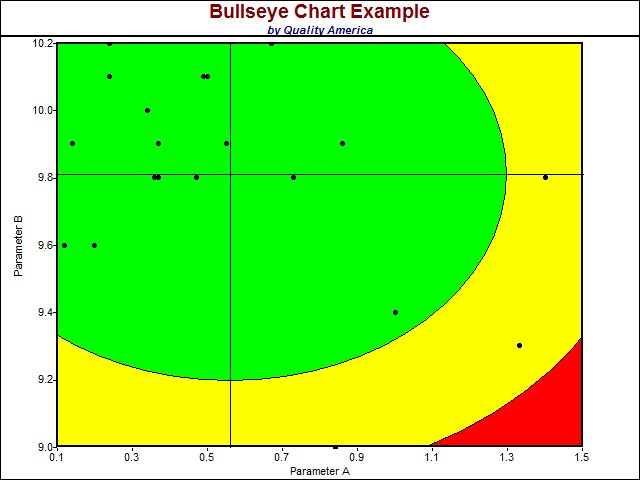Tools
7MP Management and Planning Tools
8QC Traditional Quality Control Tools
Failure Mode, Effects, and Criticality Analysis
Maintainability and Availability
Process Decision Program Charts
Interpreting a Bullseye Chart
To interpret a Bullseye chart, compare the outside edges of the concentric green, yellow and red ellipses to the requirements, or specifications. The outer edge of the green ellipse is set at 2 standard deviations (based on the sample standard deviation of the data), so you should expect about 95% of the data values to lie within this ellipse. If the sample provides a good predictor of the process (see next paragraph), then you would expect about 95% of future samples to lie within the green ellipse. The outer edge of the yellow ellipse is defined at 3 standard deviations of the sample, so 99.73% of the samples are expected within the outer edge of the yellow ellipse (i.e. about 4% within the yellow band outside the green ellipse). Stated differently, about 0.27% of the sample values are expected outside the yellow ellipse (or, about one sample in every 370 samples).
As an enumerative statistical tool, care should be taken in its interpretation. Unless statistical control of the underlying process is established using a control chart, the statistics presented on the Bullseye may not be reflective of the expected process outcome, but only provide indication of the sample output.

An example Bullseye chart from our SPC software is shown above.
See also:
Learn more about the Quality Improvement principles and tools for process excellence in Six Sigma Demystified (2011, McGraw-Hill) by Paul Keller, or his online Green Belt certification course ($499).





